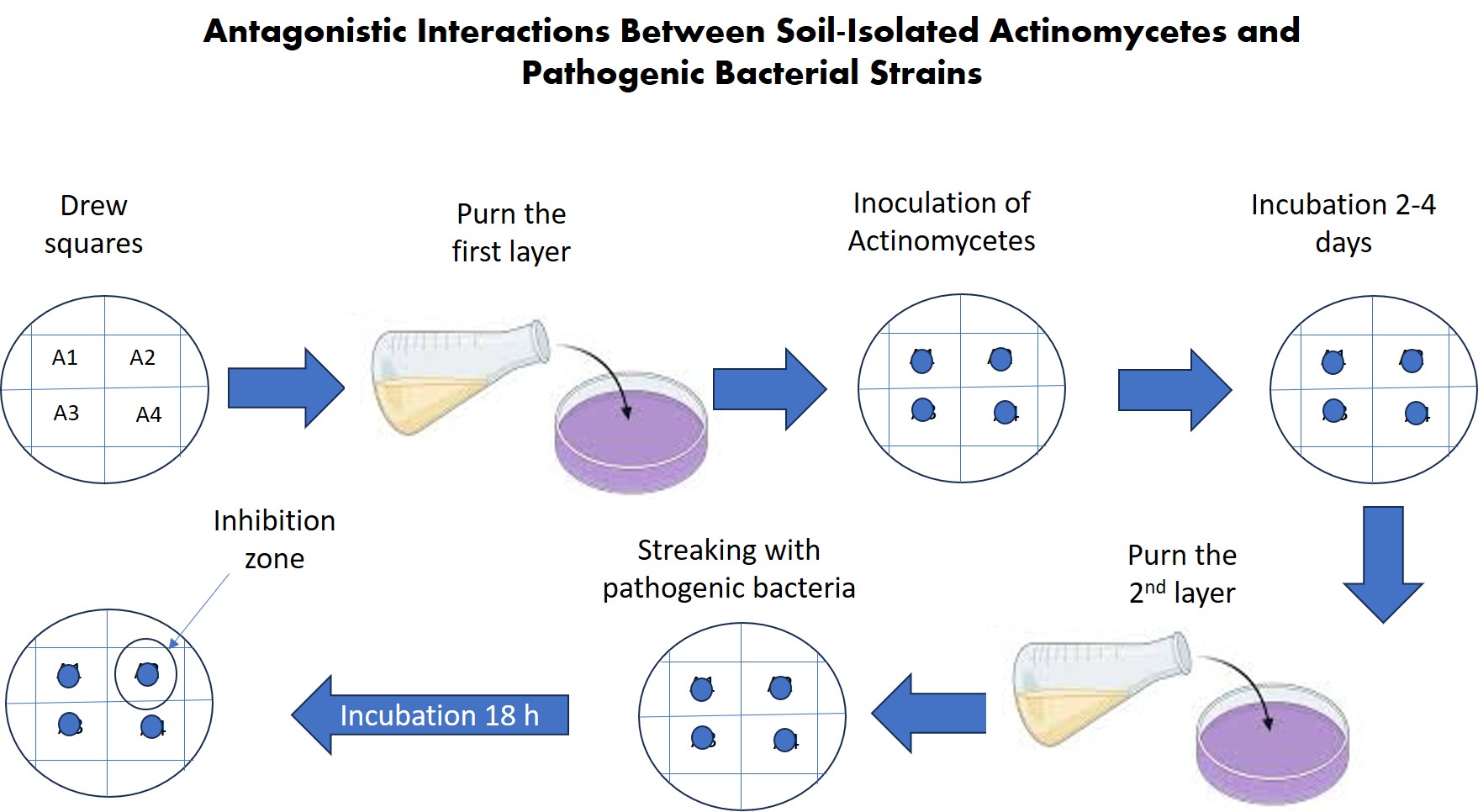Antagonistic Interactions Between Soil-Isolated Actinomycetes and Pathogenic Bacterial Strains
Keywords:
Actinomycetes, Antagonism, Antibiotics, Clinical pathogenic bacteria.Abstract
Bacterial resistance to commonly used antibiotics for treating infections is the biggest challenge facing clinicians. Previous research on antibiotic-producing actinomycetes has been limited. This study aims to explore the potential of identifying actinomycete isolates that may produce antibiotics more effective than current treatments for bacterial infections. Fifty soil samples were collected from various regions in central Iraq to isolate actinomycetes. Ten clinical bacterial isolates of Staphylococcus aureus, Escherichia coli, Klebsiella pneumoniae, Pseudomonas aeruginosa, and Enterococcus faecalis, which were resistant to multiple antibiotics, were obtained and maintained for use in experiments. The double-layer of agar and spot assay was used to detect antagonistic interactions between actinomycete and pathogenic bacterial isolates (ten isolates). The Kirby-Bauer method was employed to evaluate the response of these isolates to four different antibiotics (ofloxacin (OF), gentamicin (CN), amoxicillin (AX), vancomycin (VA). The experiments demonstrated successful isolation of actinomycetes and validated the effectiveness of the employed method. The results indicated that the clinical isolates were highly resistant to the antibiotics tested. Nine out of ten isolates showed antagonistic reactions to actinomycete bacteria. This suggests that soil-derived actinomycetes can be isolated and possess strong antagonistic activity against bacteria resistant to various antibiotics. Such isolates could potentially be used to develop more effective antibiotics than those tested in this study.

Downloads
Published
Issue
Section
License

This work is licensed under a Creative Commons Attribution-NonCommercial-NoDerivatives 4.0 International License.
All articles in the World Journal of Experimental Biosciences are published under the terms of the Creative Commons Attribution 4.0 International License (CC BY 4.0), which permits unrestricted use, distribution, and reproduction in any medium, provided the original work is properly cited.



